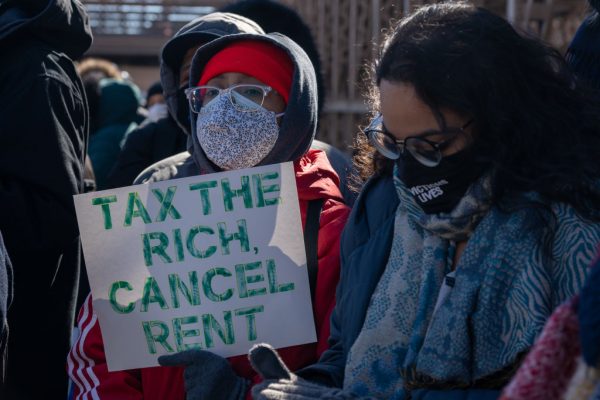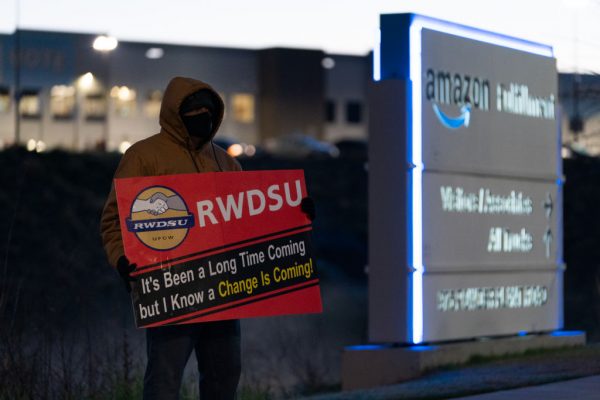E-commerce giant Amazon announced plans to permanently raise wages for more than 500,000 employees starting this month. The world’s third largest company is struggling to hire workers amid competition not only from rivals Costco, Walmart, and Target, but from a growing welfare state created by the Biden administration’s multi-trillion dollar unemployment insurance spending.
The increase will apply to employees working in teams the company is currently trying to fill positions in: delivery, customer fulfillment, specialty fulfillment, and package sorting, according to a public relations recruitment post signed by Darcie Henry, Vice President of Technology. Amazon says it fast-tracked annual compensation reviews for these segments of their workforce, but for other teams in the company, their reviews and any potential pay increase that comes with will remain scheduled for later in 2021.
No raises have been forecasted for the remaining Amazon teams.
Wage hikes not profit sharing
According to the new policy, wages will see gains from $0.50 per hour to $3 per hour, is expected to apply to 500,000 of Amazon’s 1.3 million worldwide employees, and is in addition to the $15 per hour minimum wage already in place.
Amazon is the second largest private employer in the United States, behind Walmart who trails with only 800,000 workers. In 2018, Amazon raised its U.S. minimum wage to $15 per hour after facing increased pressure from worker advocacy groups and politicians.
Success
You are now signed up for our newsletter
Success
Check your email to complete sign up
It has also supported the Biden administration’s Raise the Wage Act, which proposed to raise minimum wages in the country from the existing $7.25 per hour to $15 per hour by 2025.
While there are two likely drivers of Amazon’s recruitment struggles, neither of them are philanthropy or profit sharing, despite Amazon’s Q4 2020 earnings call revealing the company increased net sales 44 percent and doubled net profit year over year.
The first factor may be related to a welfare state being established in America resulting from ever-increasing and ever-extended stimulus and benefit packages in the name of SARS-CoV-2 measures.
According to an April 26 article by Foundation for Economic Freedom (FEE), the unemployed can now earn more money staying at home than they can at a job, “Congress passed a ‘temporary’ measure extending unemployment benefits to new categories of people and adding a weekly federal supplement (first $600, now $300) on top of existing state-level benefits. This has meant that many workers can earn more staying on welfare than by returning to work.”

The FEE says surveys have found 40 percent of small businesses are struggling to fill a staggering 7.5 million available jobs in the United States.
Steve Casper, a McDonald’s franchise owner in Florida who controls 60 stores, said he is offering people $50 just to show up for an interview, in an April 16 article by Business Insider.
Casper said the bonus was not helping attract new staff, and business is booming.
“The biggest challenge out there is the federal government and the state government are going to continue with this unemployment, because that is truly creating the incentive to not work right now,” said Casper.
“And, how do you blame somebody? You can make more money on unemployment — and so, we’ve got to be at least above that.”
In New York, the Cuomo legislature’s 2021 budget involves giving illegal immigrants who are out of work $15,600 at a cost of $2.1 billion. The handout will be paid for by increasing taxes on the wealthy and businesses. The left-leaning Fiscal Policy Institute pointed out unemployed workers could now earn between $34,000 and $50,000 per year in New York State.
The average annual pay for a retail worker in the state is $36,000 to $39,000, according to data from the U.S. Bureau of Labor Statistics.
And the second is competition by rivals Costco, who raised its minimum wage to $15 per hour in February and Target who did the same in 2020. Walmart raised its average hourly wage over $15 per hour in February, but in reality for most employees their wage is “at least $13 per hour.”
Unionization woes
Recently, Amazon’s voluntary $15 minimum was used as an incentive against efforts for unionization at one of its warehouses in Alabama.
The Retail, Wholesale, and Department Store Union (RWDSU) had sought to enlist Amazon’s workers to its ranks. According to CNBC, almost 5,800 workers were eligible to vote on whether to join the RWDSU. Official results showed while 3,215 votes were cast, only 738 supported unionization.

RWDSU said it plans to challenge the results, alleging Amazon violated several legal restrictions in the run up to the election, including threatening and intimidating employees to vote against the union. Some workers were allegedly warned they would lose their jobs, benefits, and compensation if a union was formed. Allegations also exist stating Amazon threatened to close the warehouse entirely if it became unionized.
“Amazon knew full well that unless they did everything they possibly could, even illegal activity, their workers would have continued supporting the union. We demand a comprehensive investigation over Amazon’s behavior in corrupting this election,” Stuart Appelbaum, RWDSU President said.
In late March, Democrat Representative Mark Pocan slammed Amazon over stories workers were forced to urinate in water bottles due to draconian scheduling oversight.
Amazon had initially denied the accusation in a Twitter diatribe targeting Pocan where it claimed “You don’t really believe the peeing in bottles thing, do you? If that were true, nobody would work for us.” The Big Tech member was later forced to publish a retraction where they said “the tweet was incorrect” because Amazon’s representative spoke in regard to warehouse workers, rather than delivery drivers, which have been confirmed to be forced to relieve themselves without the use of a restroom.
However, Amazon claimed the issue was simply a result of traffic and closed washrooms due to measures enacted under the pretext of SARS-CoV-2, “We know that drivers can and do have trouble finding restrooms because of traffic or sometimes rural routes, and this has been especially the case during Covid when many public restrooms have been closed.”
With reporting by Prakash Gogoi













